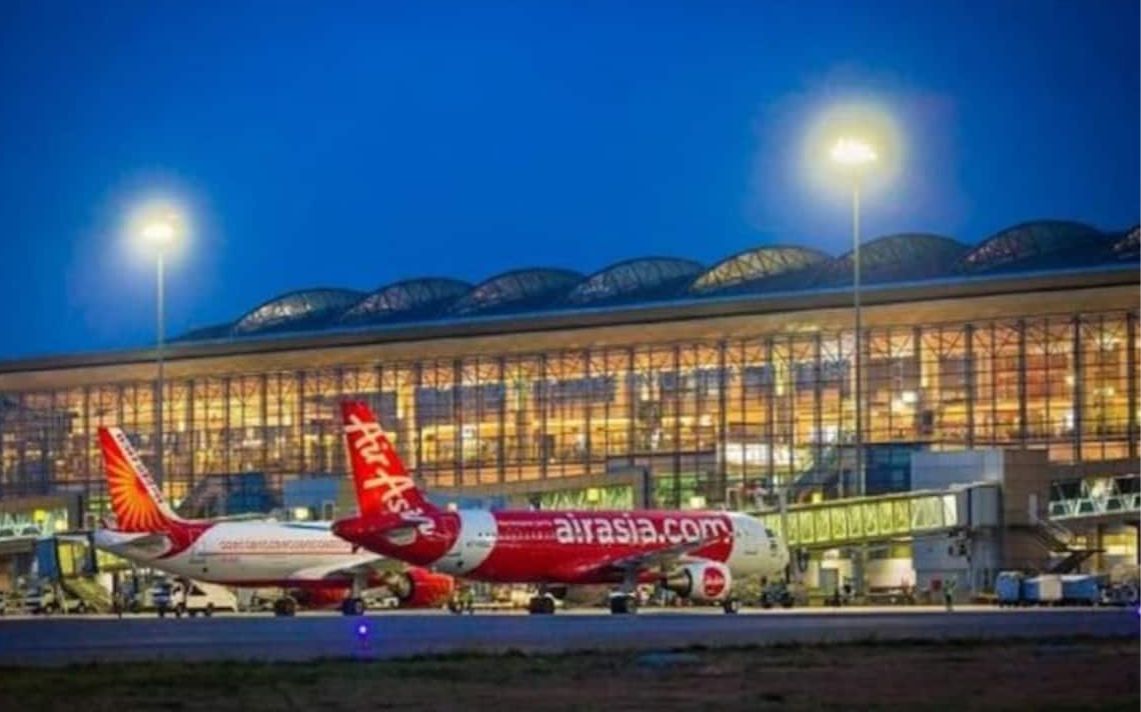 Image Source: India.com
Image Source: India.com
In a revelation that’s reshaping perceptions of India’s aviation landscape, the Rajiv Gandhi International Airport (RGIA) in Hyderabad has emerged as the largest airport in the country—not just in terms of area, but also in ambition, infrastructure, and passenger experience. Contrary to expectations, this aviation behemoth isn’t located in Delhi, Mumbai, Bengaluru, or any other metro hub. Instead, it thrives in Shamshabad, Telangana, where it functions more like a self-contained city than a mere transit point.
Key Highlights That Redefine Scale
RGIA spans over 5,500 acres, making it India’s largest airport by area.
It features Asia’s longest runway at 4,260 meters, capable of handling large aircraft like the Airbus A380.
The airport served over 2.10 crore passengers in FY 2022–23 and is expanding to accommodate 4.5 crore annually.
RGIA was the first Indian airport to introduce e-boarding for domestic and international passengers.
Infrastructure That Rivals Urban Districts
The airport’s design and facilities are engineered to deliver a seamless, world-class experience. From check-in to boarding, RGIA offers a blend of efficiency and luxury:
Passenger Amenities:
96 check-in counters and 46 immigration counters
10 aerobridges and 83 parking bays
Free Wi-Fi, baby care rooms, emergency medical services, and luggage storage
Expansive duty-free shopping zones and wellness lounges
Sustainability and Innovation:
RGIA generates over 25 megawatts of solar energy, powering nearly 30% of its daily operations.
Rainwater harvesting systems collect up to 2 billion litres annually.
The terminal roof is designed for optimal energy efficiency and water conservation.
Cultural Integration:
A unique Heritage Wall showcases artefacts from the Nizam era, blending history with modernity.
Therapy dogs and kids’ play zones enhance passenger comfort and reduce travel stress.
Expansion Plans and Future Vision
RGIA isn’t resting on its laurels. A massive expansion project is underway, including:
A new terminal and runway to boost passenger capacity to 45 million annually.
A multimodal transit hub integrating metro, bus, and taxi services for smoother connectivity.
A dedicated cargo terminal to support Hyderabad’s growing role as a logistics and pharmaceutical hub.
These developments aim to position RGIA not just as India’s largest airport, but as a global aviation benchmark.
Strategic Importance and Economic Impact
Hyderabad’s airport has played a pivotal role in transforming the city into a business and tech powerhouse:
It supports the city’s IT, biotech, and pharma sectors by offering efficient global connectivity.
The airport’s proximity to industrial corridors and SEZs enhances its cargo handling capabilities.
RGIA’s growth has catalyzed real estate development, hospitality expansion, and employment generation in the region.
A Symbol of India’s Aviation Ascent
India’s domestic aviation market is now the third largest globally, with over 37 crore passengers recorded in 2023–24. RGIA’s rise reflects this momentum and signals a shift in how infrastructure is distributed across the country:
Airports in Tier-2 cities like Hyderabad are now leading in scale and innovation.
The upcoming Jewar International Airport in Uttar Pradesh is expected to surpass RGIA, but for now, Hyderabad holds the crown.
RGIA’s success challenges the notion that only metro cities can host world-class aviation hubs.
As India continues to soar, RGIA stands as a testament to what visionary planning, sustainable design, and regional empowerment can achieve. It’s not just an airport—it’s a city in motion.
Sources: MSN, Times Now, Aviation A2Z, India.com
Advertisement
Advertisement



